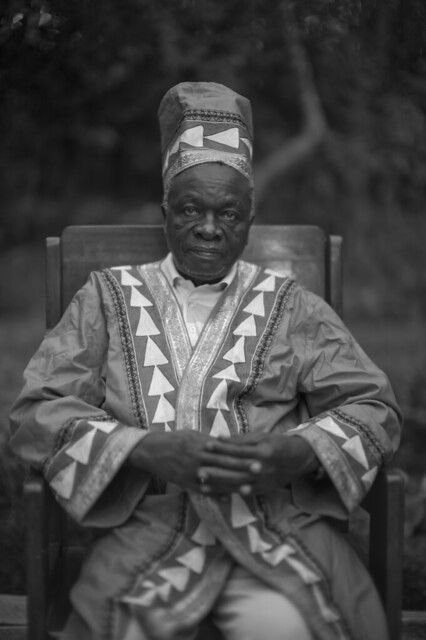Wilson Weasa Wamimbi, the Umukuuka of Inzu Ya Masaaba Bugisu and the former Chairman of Mbale district, has died at 85 years old.
Wamimbi’s desmise was announced by the Spokesperson of Inzu ya Masaaba, Steven Masiga, saying that it occurred on Friday, April 12, 2024, at around 8:30 p.m. from Mulago National Referral Hospital in Kampala.
According to Masiga, Umukuuka Wamimbi was having a routine medical checkup at Mulago Hospital for quite a while, until he breathed his last at the age of 85.
“As inzuymasaba leadership, we offer condolences to the family of the late Umukuuka, his highness Wilson Weasa Wamimbi, and the entire Bamasaba upon his untimely demise,” Masiga said.
Masiga said that, at an appropriate time, Prime Minister Inzuymasaba Charles Walimbwa Peke will guide him on his issues of burial and other related protocols.
Born in 1938 in Busano sub-county, Mbale district, Wamimbi went to Nabumali High School and trained as a teacher at Kyambogo College before going for further studies at Makerere University, where he graduated with a degree in marketing.
The background of Bamasaaba Cultural Institution and Election of the Late Wamimbi as Umukuuka
In 1964, during the Obote I regime, Bamasaaba had a cultural institution called Buinga, with Umuinga Yonasani Buyi Mungoma as the cultural head. He had represented Bugisu district council, or Lukhobo, at the Legislative Council, or Legco, in 1960, and Stanley Wanambwa was elected Secretary General for Lukhobo. However, when Obote banned all cultural institutions in Uganda in 1966, Buinga ended.
Before his death, Mungoma interfaced with Canon Codvia Wakiro and shared with him the vision of leadership that would unite all descendants of Masaaba. He suggested a name similar to “House of Masaaba” as a reference cultural home for the Bamasaaba. He, however, warned against using the title of Umuinga and instead preferred Umukuuka as the title for the cultural head.
It is reported that Mungoma refused the Umuinga title because of the pride connotation. Umuinga comes from the Lumasaaba word “Ukhwiinga,” meaning to be proud. Bamasaaba men, who brave the knife, are naturally proud, and each regards himself as a king in his own right. They cannot fathom another man above them.
Umukuuka sounds more humble and presents maturity and the elderly. Bukuuka comes from the Lumasaaba word, Kuuka, meaning grandfather. It is an honorable title bestowed upon a man who bore children and grandchildren. Bukuuka is Kuukaship, or Grandfathership, meaning grandfather of grandfathers, meaning the ultimate of fatherhood.
Canon Wakiro lit the fire that led to the formation of Inzu ya Masaaba in July 2010. A series of meetings were held to brainstorm on the nature, objectives, structure, tenure, and rotational elections according to the Zinda (families) of the new cultural institution.
By July 2010, the constitution had been drawn; registration was done, giving birth to Inzu ya Masaaba under the signatures of Canon Codvia M. Wakiro, Situma Damascus Munyanda, Cornelius Wekunya, Amb. Wilson Weasa Wamimbi, and Bishop Mudonyi. Peter Bulafu, Naomi N. Aryada, Nagimesi W. Namwata, William G. Wanendeya, Prof. Dan Wadada Nabudere, Mary Mutonyi Odedo, Prof. Timothy Wangusa, Rev. Khulosya Kangala James, Peter K. Namaondo, Charles Mung’oma Natsye, Wotaluka L. Mainza, Chief Justice Japheth George Masika, Eng. Darlington Sakwa, Dr. Michael L. Mutende, Charles Wagwabubi Siango, and Zadoki Wetaka as founders.
Inzu ya Masaaba is a cultural institution registered and recognized by the Constitution of Uganda under the Cultural and Traditional Institutions Act as the BaMasaaba Cultural Institution that brings together the three historical families (called Ziinda/Tsiinda for plural, Inda for singular) of Inda ya Mwamba, Inda ya Mubuuya, and Inda ya Wanaale.
The three families gave birth to 26 clans, and hundreds of sub-clans spread across Masaabaland. The leadership of Inzu ya Masaaba is vested in a cultural leader called Uwelukoosi Umukuuka We BaMasaaba( His royal highness the King of BaMasaaba).
Amb. Wilson Weasa Wamimbi, a seasoned administrator who served as LCV Chairperson for Mbale district from 1987–1998 and later as an Ambassador to Canada from the Sano Clan of Inda ya Wanaale, was elected the first Umukuuka We BaMasaaba, the topmost honor for the cultural leader. In his five-year tenure (2010–2015), he laid the foundation upon which Inzu ya Masaaba thrives.
In November 2015, Uwelukoosi Sir Bob Saul Kipiro Mushikori from the Kigai Clan of Inda ya Mubuuya was enthroned as Umukuuka II for the growing cultural institution. It is reported that his reign came with a fair share of fortunes and challenges. He recruited and empowered an elaborate and young cabinet that illuminated Inzu ya Masaaba far and wide. He came up with ambitious programs, but unfortunately, he never lived to see their fruition.
His five-year tenure came to an end in November 2020 when he died of what was believed to be COVID-19 in January 2021.
Elder Amram John Wagabyalire from the Halasi Clan of Inda ya Mwambu was elected Umukuuka III according to the costitution of Inzu ya Masaaba on December 11, 2020, at Malukhu Cultural Offices in Mbale City to replace him.
The cultural institution is structured on an organ model: the Culture Council, headed by the Chairperson; the General Assembly, headed by the Speaker; the Governing Board, headed by the Chairperson; and the Secretariat, headed by the Secretary General. Umukuuka appoints the cabinet of ministers to support him in implementing programs.
